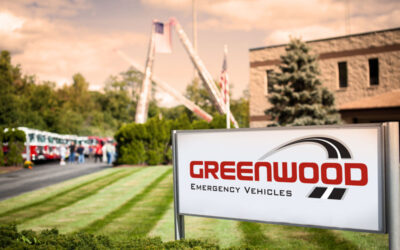By Bill Adams
During the apparatus purchasing process, National Fire Protection Association (NFPA) 1901, Standard for Automotive Fire Apparatus, is the accepted “bible” for fire departments and apparatus manufacturers (OEMs). Unfortunately, both can interpret it differently when there’s a claim that a proposal or a part thereof meets the intent of NFPA 1901. Claims of compliance and allegations of noncompliance deserve close scrutiny.
NFPA 1901 is a nationwide, nonbinding, voluntary, consensus standard describing minimum requirements for new apparatus. Unless a political subdivision has a law or regulation mandating the purchase of compliant apparatus, a fire department may not legally have to. Another possible binding requirement for compliance could be within a contractual agreement between a governmental agency (city, town, etc.) and an entity representing end users (professional labor organization, fire company, etc.). For example, “We provide trained firefighters; you provide compliant apparatus.”
A consensus standard means there’s an agreement on the content by the parties promulgating it. The NFPA 1901 technical committee has nine membership classifications that are basically one third end users; one third manufacturers; and one-third special experts, which includes everyone else.
No laws prevent OEMs from building noncompliant apparatus for domestic use. It is highly unlikely, if not impossible, to find a manufacturer who will do so—probably because of the fear of litigation. Purchasers not liking, wanting, or needing an NFPA 1901 requirement may also reluctantly accept it for the same reason. Voluntary compliance is influenced by the possibility of adverse legal action if “something bad happens” that could possibly be the result of purchasing or supplying noncompliant apparatus. In a court of law, meeting the intent of NFPA 1901 may become irrelevant.
Meeting the intent means a goal or target has been achieved. NFPA 1901’s objective is specifying safe, reliable, and functional apparatus. Despite manufacturers providing compliant apparatus, overly aggressive local dealers might devalue the meaning of meeting the intent when submitting a proposal. For example, a purchaser might specify a 1,000-gpm pump, and a dealer proposes a 750-gpm pump. In this scenario, the dealer meets the technical requirements and intent of NFPA 1901 but not of the purchaser.
Purchasers can denigrate meeting the intent, especially for requirements they consider innocuous as well as for their personal preferences. One common example is not adhering to the standard’s specific color requirements for rear retroreflective chevrons. Some specify noncompliant colors claiming they still meet the intent of NFPA 1901 in making the apparatus visible by providing reflective chevrons—regardless of whether or not the chevrons are comply with the standard’s precise technical requirements.
While NFPA 1901 has very specific technical requirements, it is ambiguous in some areas, including the appendix where it states purchasers “should be” in compliance with or “ought to consider” a recommendation. Purchasers should objectively ask themselves—or a higher authority—if the intent of NFPA 1901 is still met if they do not follow the “should be” and “ought to be” requirements.
NFPA 1901 has what I call an escape clause allowing OEMs to deliver noncompliant apparatus. It is called a “Statement of Exceptions.” Such exceptions are usually applicable to purchaser- or dealer-supplied items such as graphics, ancillary equipment, and tool mounting. Submitted with the proposal, the statement—signed by both purchaser and seller—describes exactly what is noncompliant and who is responsible to ensure the apparatus is in full compliance prior to being placed in service. In essence, it transfers the responsibility, accountability, and subsequent liability of compliance to the purchaser. Meeting the intent now becomes, and probably always has been, the fire department’s responsibility.
BILL ADAMS is a member of the Fire Apparatus & Emergency Equipment Editorial Advisory Board, a former fire apparatus salesman, and a past chief of the East Rochester (NY) Fire Department. He has 50 years of experience in the volunteer fire service.






